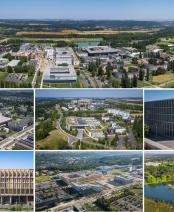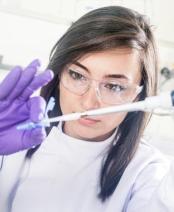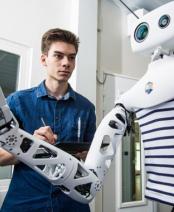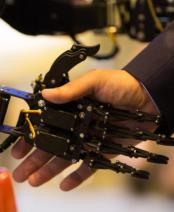PLASMAScience
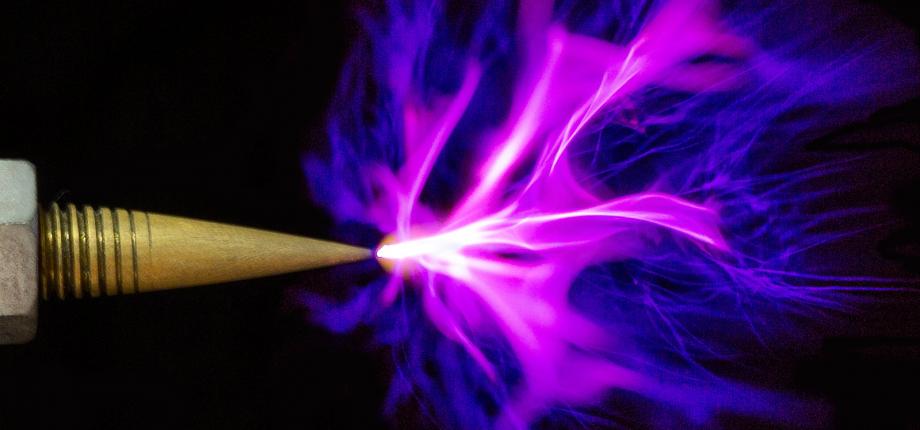
Plasma, considered to be the fourth state of matter, represents more than 99% of the visible universe. Plasma plays an important role in astrophysics and space physics, but today it is also present in our daily lives, used in particular to produce smartphones, computers, screens, medical images... Plasmas are also studied to develop new applications in a wide range of fields, from medicine to nanotechnology, aeronautics, environment and agriculture. Plasma is also thermonuclear fusion that will provide a decarbonized alternative to conventional energy production.
The mission of the PLASMAScience Graduate School is to promote the teaching of plasma physics by offering funding to students wishing to pursue their Master's and doctoral degrees in the laboratories constituting the PLASMAScience Graduate School at IP Paris.
Plasma science is a rich and interdisciplinary field of physics that is at the crossroads of other academic fields such as chemistry, engineering and applied mathematics. Plasma physics, one of the major research areas at IP Paris, involves seven laboratories (CMAP, CPHT, LOA, LPICM, LPP, LSI, LULI) covering a wide range of plasma fields at the cutting edge of science and technology: thermonuclear fusion, space plasmas, plasmas for medicine, nanotechnology, etc.
The PLASMAScience Graduate School brings together the activity of these seven laboratories and represents today the largest plasma community in France.
The PLASMAScience Graduate School aims to become one of the major international players in plasma physics research and training. Its role is to combine the high-level research of these seven laboratories with attractive trainings for IP Paris students by offering young talents the opportunity to work with dynamic and multidisciplinary research teams on a scientific project and to access its extensive international scientific and academic network. Its goal is to train high-level researchers and engineers capable of meeting the new social challenges.
History
In August 2019, a 4 million euro grant (over 10 years) was awarded to the PLASMA_ST project, through the second wave of the call for projects "University Research Schools" of the Future Investment Programme (PIA3). This project is being carried out by seven IP Paris laboratories (CMAP, CPHT, LOA, LPICM, LPP, LSI, LULI).
Of the 81 projects presented on a wide range of topics (archaeology, engineering, chemistry, sports, etc.) only 24 were selected by an international jury, including 4 IP Paris projects.
This PIA3 state programme aims to support the creation of University Research Schools (in French, Ecoles Universitaires de recherche, EUR), inspired by the Anglo-Saxon model of graduate schools, which will "bring together master's and doctoral studies as well as one or more high-level research laboratories".
The project team demonstrated the importance of plasma research. The jury highlighted the quality of the project both at the scientific and pedagogical level, as well as its strong international dimension.
The EUR was officially launched in November 2020. In January 2021 the EUR decided to adopt the name PLASMAScience (PLASMAScience Graduate School).
This initiative is supported by the French National Research Agency under the "Investissements d'Avenir" program (ANE-18-EURE-0014).
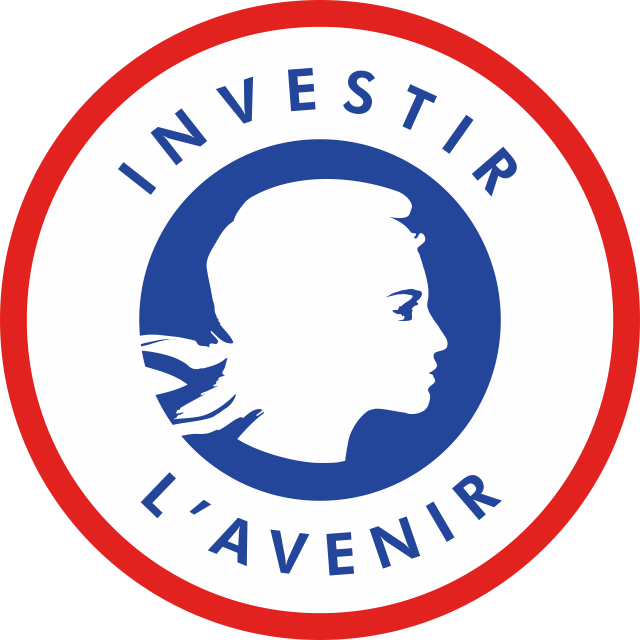
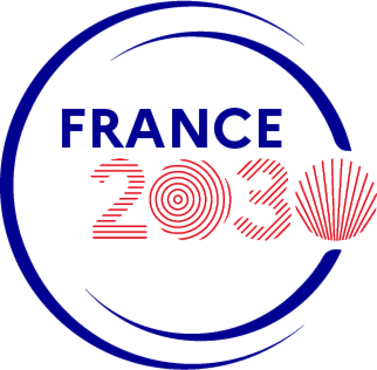
The PLASMAScience’s three major areas of research are: « Plasmas and Energy » « Plasmas and Space », « Plasmas and Society »:
- The topic « Plasmas and Energy », which focuses on key plasma processes related to energy loss in large international facilities dedicated to thermonuclear fusion, and also explores tracks in nanotechnology for solar energy;
- The topic « Plasmas and Space », which is focused on space plasmas and more specifically on energy conversion and dissipation at different plasma scales. It also includes plasma propulsion for new generations of « all-electric » satellites;
- The topic « Plasmas and Society », which explores laser-produced plasmas and cold plasmas, and also develops applications in a wide range of fields ranging from medicine (medical imaging, therapy, etc.), to nanotechnology, aeronautics, environment and agriculture.


The PLASMAScience's mission is to provide support to teaching in plasma physics and develop research initiatives: to bundle plasma activities, to attract the brightest French and foreign students to Doctoral, Master's programs, internships and to promote plasma research at the international level.
To achieve this, the PLASMAScience will carry out the following actions:
- Develop innovative teaching in Master’s programs and PhDs
- Strengthen the link between training and research by combining the teaching and researchers’ expertise
- Develop a scholarship program in Master programs and PhDs
- Build a network of international partners
- Communicate on plasma science and enhance research in this area


Within the framework of its missions, the PLASMAScience Graduate School has the possibility of financing specific projects: study grants, internship grants, financing of a scientific event, mobility etc.
These funds are intended for French and international researchers, PhD students, students. Funding is awarded through calls for proposals in plasma physics. You can find a funding adapted to your project and detailed information on the awarding procedure by clicking on the heading that corresponds to you in the list below.
The PLASMAScience offers fellowships for highly motivated and talented French and international students enrolling in one of two Masters related to plasma physics at the Institut Polytechnique de Paris - Master 2 of Physics of Plasmas and Fusion and Master 2 Large Facilities (Specialties: plasmas) - and the opportunity of an internship in internationally renowned research laboratories to prepare students for tomorrow’s challenges.


Head of the PLASMAScience: Fouad Sahraoui
Deputy Head of the PLASMAScience: Anne Bourdon
Project Manager: Tatiana Juresic
The governance of the PLASMAScience is led by the newly established Council which representing the PLASMAScience’s ecosystem: training and research, including all plasma physics specialties. This first Council is expected to evolve and can be renew regularly. The Council will meet to establish strategic guidelines and to take decisions on: ½ Doctoral or Post-Doctoral grants, Masters scholarships, internship fellowships, calls for devices for experimental and digital courses, trainings and events.
Members of the Council:
- Patrick AUDEBERT
- Séréna BASTIANI, Representative of Master GI
- Silke BIERMANN, Representative of the Physics Departments of the X and of the IP Paris
- Yvan BONNASSIEUX
- Anne BOURDON, Deputy Head of the PLASMAScience
- Mickael GRECH, Representative of PhD track, Master PPF
- Fouad SAHRAOUI, Head of the PLASMAScience
- Erik JOHNSON
- Catherine KRAFFT, Representative of Master PPF
- Sébastien LE PAPE
- Marc MASSOT
- Timothée NICOLAS
- Michèle RAYNAUD – BRUN
- Laurence REZEAU, Representative of the Research Federation in Plasma Physics PLAS@PAR
- Stéphane SEBBAN


Laboratory of Plasma Physics (LPP)
Plasma Physics
- Focused on plasma science with 115 staff including 28 researchers and professors, 27 ITA, 32 PhD students and 12 postdocs combining theoretical, experimental and numerical approaches for very different applications : plasma for fusion by magnetic confinement, space plasmas and cold plasmas.
- Has been selected to operate instruments in international high-level large-scale facilities as tokamaks or space missions. The cold plasmas with a strong potential for applications is for example at the origin of a start-up and responsible for an industrial Chair (POSEIDON).
Laboratory of High Intensity Lasers (LULI)
Intense Laser Utilization
- Hot Plasma Physics, from atoms to stars, a training center in Optics, Lasers & Plasmas.
- A national and European Research Infrastructure since 1975, with more than 80 out of 105 staff (17 researchers and professors, 50 ITA, 10 PhD students and 5 postdocs.
- As Research Infrastructure, LULI offers state-of-art laser and experimental multi-beam facilities to the largest user community. LULI is developing research programs on radiation-produced plasmas and their applications.
Laboratory for Applied Optics (LOA)
Applied Optics
- Involves 35 staff in plasma science (12 researchers and professors, 11 ITA, 7 PhD students and 5 postdocs).
- Is recognized as a research center for fundamental and applied physics in ultrafast laser-plasma science, with the mission to understand and reveal the properties of the matter under strong excitation and at the shortest time or space scales.
- Its activity covers a wide spectrum from academic research to industrial and societal applications. Among its succes, LOA leads four running European ERC grants and participates to two EQUIPEX.
Laboratory for Interfaces and Thin Films (PICM)
Interfaces, low-temperature plasmas
- 30 staff involved in plasma science (7 researchers and professors, 7 ITA, 11 PhD students and 5 post-docs).
- Use of large-area, low-temperature plasma process to the fabrication of optoelectronic materials with applications in the fields of photovoltaics, electronics, sensors, and batteries through national and international collaborations.
- Participates to the “Institut Photo-Voltaïque en Ile-de-France” (IPVF) supported by the PIA state programme and is responsible for the Industrial Chair (PISTOL).
Center for Theoretical Physics (CPHT)
Theoretical Physics
- Two teams dedicate their activity to plasma physics: one in hot magnetized plasmas, and one in laser generated plasmas. Both teams struggle to combine the theoretical modeling of fundamental processes to the development of novel numerical methods allowing multi-scale simulations. They also interact with experimentalists in the framework of national and international collaborations, in order to help in the interpretation of actual data and have longstanding collaborations with LOA, LPICM, LULI and LPP.
Center for Applied Mathematics (CMAP)
Applied Mathematics
- Ten researchers involving software engineers with a strong experience on fundamental fluid modeling of plasma flows from kinetic theory, asymptotic analysis, novel numerical methods for strongly multiscale problems, and high-performance computing on new architectures (Initiative HPC@Maths).Several PhD students and post-doctoral fellows in the field of plasma physics simulation.
- Collaborations on different plasma applications are carried out with LPP and LPICM and the Aerospace Department at the von Karman Institute, and NASA’s Advanced Supercomputer division.
Laboratory for Irradiated Solids (LSI)
- Owns a simulation program concerning the laser – plasma interaction for the production of fast electrons in collaboration with CPHT and LULI (1 researcher, 1 PhD student, 1 postdoc).


Plasma science is a rich and interdisciplinary field of physics that is at the crossroads of other academic fields such as chemistry, engineering and applied mathematics. Plasma physics, one of the major research areas at IP Paris, involves seven laboratories (CMAP, CPHT, LOA, LPICM, LPP, LSI, LULI) covering a wide range of plasma fields at the cutting edge of science and technology: thermonuclear fusion, space plasmas, plasmas for medicine, nanotechnology, etc.
The PLASMAScience Graduate School brings together the activity of these seven laboratories and represents today the largest plasma community in France.
The PLASMAScience Graduate School aims to become one of the major international players in plasma physics research and training. Its role is to combine the high-level research of these seven laboratories with attractive trainings for IP Paris students by offering young talents the opportunity to work with dynamic and multidisciplinary research teams on a scientific project and to access its extensive international scientific and academic network. Its goal is to train high-level researchers and engineers capable of meeting the new social challenges.
History
In August 2019, a 4 million euro grant (over 10 years) was awarded to the PLASMA_ST project, through the second wave of the call for projects "University Research Schools" of the Future Investment Programme (PIA3). This project is being carried out by seven IP Paris laboratories (CMAP, CPHT, LOA, LPICM, LPP, LSI, LULI).
Of the 81 projects presented on a wide range of topics (archaeology, engineering, chemistry, sports, etc.) only 24 were selected by an international jury, including 4 IP Paris projects.
This PIA3 state programme aims to support the creation of University Research Schools (in French, Ecoles Universitaires de recherche, EUR), inspired by the Anglo-Saxon model of graduate schools, which will "bring together master's and doctoral studies as well as one or more high-level research laboratories".
The project team demonstrated the importance of plasma research. The jury highlighted the quality of the project both at the scientific and pedagogical level, as well as its strong international dimension.
The EUR was officially launched in November 2020. In January 2021 the EUR decided to adopt the name PLASMAScience (PLASMAScience Graduate School).
This initiative is supported by the French National Research Agency under the "Investissements d'Avenir" program (ANE-18-EURE-0014).


The PLASMAScience’s three major areas of research are: « Plasmas and Energy » « Plasmas and Space », « Plasmas and Society »:
- The topic « Plasmas and Energy », which focuses on key plasma processes related to energy loss in large international facilities dedicated to thermonuclear fusion, and also explores tracks in nanotechnology for solar energy;
- The topic « Plasmas and Space », which is focused on space plasmas and more specifically on energy conversion and dissipation at different plasma scales. It also includes plasma propulsion for new generations of « all-electric » satellites;
- The topic « Plasmas and Society », which explores laser-produced plasmas and cold plasmas, and also develops applications in a wide range of fields ranging from medicine (medical imaging, therapy, etc.), to nanotechnology, aeronautics, environment and agriculture.


The PLASMAScience's mission is to provide support to teaching in plasma physics and develop research initiatives: to bundle plasma activities, to attract the brightest French and foreign students to Doctoral, Master's programs, internships and to promote plasma research at the international level.
To achieve this, the PLASMAScience will carry out the following actions:
- Develop innovative teaching in Master’s programs and PhDs
- Strengthen the link between training and research by combining the teaching and researchers’ expertise
- Develop a scholarship program in Master programs and PhDs
- Build a network of international partners
- Communicate on plasma science and enhance research in this area


Within the framework of its missions, the PLASMAScience Graduate School has the possibility of financing specific projects: study grants, internship grants, financing of a scientific event, mobility etc.
These funds are intended for French and international researchers, PhD students, students. Funding is awarded through calls for proposals in plasma physics. You can find a funding adapted to your project and detailed information on the awarding procedure by clicking on the heading that corresponds to you in the list below.
The PLASMAScience offers fellowships for highly motivated and talented French and international students enrolling in one of two Masters related to plasma physics at the Institut Polytechnique de Paris - Master 2 of Physics of Plasmas and Fusion and Master 2 Large Facilities (Specialties: plasmas) - and the opportunity of an internship in internationally renowned research laboratories to prepare students for tomorrow’s challenges.


Head of the PLASMAScience: Fouad Sahraoui
Deputy Head of the PLASMAScience: Anne Bourdon
Project Manager: Tatiana Juresic
The governance of the PLASMAScience is led by the newly established Council which representing the PLASMAScience’s ecosystem: training and research, including all plasma physics specialties. This first Council is expected to evolve and can be renew regularly. The Council will meet to establish strategic guidelines and to take decisions on: ½ Doctoral or Post-Doctoral grants, Masters scholarships, internship fellowships, calls for devices for experimental and digital courses, trainings and events.
Members of the Council:
- Patrick AUDEBERT
- Séréna BASTIANI, Representative of Master GI
- Silke BIERMANN, Representative of the Physics Departments of the X and of the IP Paris
- Yvan BONNASSIEUX
- Anne BOURDON, Deputy Head of the PLASMAScience
- Mickael GRECH, Representative of PhD track, Master PPF
- Fouad SAHRAOUI, Head of the PLASMAScience
- Erik JOHNSON
- Catherine KRAFFT, Representative of Master PPF
- Sébastien LE PAPE
- Marc MASSOT
- Timothée NICOLAS
- Michèle RAYNAUD – BRUN
- Laurence REZEAU, Representative of the Research Federation in Plasma Physics PLAS@PAR
- Stéphane SEBBAN


Laboratory of Plasma Physics (LPP)
Plasma Physics
- Focused on plasma science with 115 staff including 28 researchers and professors, 27 ITA, 32 PhD students and 12 postdocs combining theoretical, experimental and numerical approaches for very different applications : plasma for fusion by magnetic confinement, space plasmas and cold plasmas.
- Has been selected to operate instruments in international high-level large-scale facilities as tokamaks or space missions. The cold plasmas with a strong potential for applications is for example at the origin of a start-up and responsible for an industrial Chair (POSEIDON).
Laboratory of High Intensity Lasers (LULI)
Intense Laser Utilization
- Hot Plasma Physics, from atoms to stars, a training center in Optics, Lasers & Plasmas.
- A national and European Research Infrastructure since 1975, with more than 80 out of 105 staff (17 researchers and professors, 50 ITA, 10 PhD students and 5 postdocs.
- As Research Infrastructure, LULI offers state-of-art laser and experimental multi-beam facilities to the largest user community. LULI is developing research programs on radiation-produced plasmas and their applications.
Laboratory for Applied Optics (LOA)
Applied Optics
- Involves 35 staff in plasma science (12 researchers and professors, 11 ITA, 7 PhD students and 5 postdocs).
- Is recognized as a research center for fundamental and applied physics in ultrafast laser-plasma science, with the mission to understand and reveal the properties of the matter under strong excitation and at the shortest time or space scales.
- Its activity covers a wide spectrum from academic research to industrial and societal applications. Among its succes, LOA leads four running European ERC grants and participates to two EQUIPEX.
Laboratory for Interfaces and Thin Films (PICM)
Interfaces, low-temperature plasmas
- 30 staff involved in plasma science (7 researchers and professors, 7 ITA, 11 PhD students and 5 post-docs).
- Use of large-area, low-temperature plasma process to the fabrication of optoelectronic materials with applications in the fields of photovoltaics, electronics, sensors, and batteries through national and international collaborations.
- Participates to the “Institut Photo-Voltaïque en Ile-de-France” (IPVF) supported by the PIA state programme and is responsible for the Industrial Chair (PISTOL).
Center for Theoretical Physics (CPHT)
Theoretical Physics
- Two teams dedicate their activity to plasma physics: one in hot magnetized plasmas, and one in laser generated plasmas. Both teams struggle to combine the theoretical modeling of fundamental processes to the development of novel numerical methods allowing multi-scale simulations. They also interact with experimentalists in the framework of national and international collaborations, in order to help in the interpretation of actual data and have longstanding collaborations with LOA, LPICM, LULI and LPP.
Center for Applied Mathematics (CMAP)
Applied Mathematics
- Ten researchers involving software engineers with a strong experience on fundamental fluid modeling of plasma flows from kinetic theory, asymptotic analysis, novel numerical methods for strongly multiscale problems, and high-performance computing on new architectures (Initiative HPC@Maths).Several PhD students and post-doctoral fellows in the field of plasma physics simulation.
- Collaborations on different plasma applications are carried out with LPP and LPICM and the Aerospace Department at the von Karman Institute, and NASA’s Advanced Supercomputer division.
Laboratory for Irradiated Solids (LSI)
- Owns a simulation program concerning the laser – plasma interaction for the production of fast electrons in collaboration with CPHT and LULI (1 researcher, 1 PhD student, 1 postdoc).










